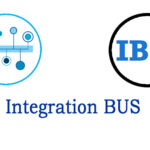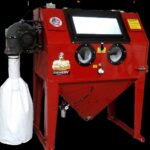Introduction
Shenzhen City Blue World is not just a bustling metropolis known for its technological advancements and vibrant culture; it’s also making strides towards a sustainable and eco-friendly future. In recent years, the city has embraced a green revolution, implementing various initiatives to reduce its environmental footprint. This article explores the eco-friendly initiatives in Shenzhen City Blue World, highlighting the city’s commitment to environmental sustainability.
Green Infrastructure: Building a Sustainable City
One of the cornerstones of Shenzhen City Blue World eco-friendly initiatives is its commitment to green infrastructure. The city has been investing heavily in creating sustainable urban spaces, with an emphasis on parks, green roofs, and vertical gardens. These green spaces not only enhance the aesthetic appeal of the city but also contribute to improved air quality and biodiversity.
Shenzhen’s innovative approach to urban planning includes incorporating greenery into its skyscrapers and residential buildings. The result is a cityscape where nature and architecture coexist harmoniously. The green revolution is not just about preserving natural spaces but also integrating them seamlessly into the urban fabric.
Sustainable Transportation: Navigating the City with a Low Carbon Footprint
To combat the environmental impact of transportation, Shenzhen City Blue World has implemented an extensive public transportation system that encourages eco-friendly commuting. The city boasts a well-connected network of buses, metro lines, and cycling paths, making it convenient for residents and visitors to choose sustainable modes of transportation.
Furthermore, Shenzhen has been a pioneer in the adoption of electric vehicles. The city’s commitment to reducing air pollution is evident in its widespread use of electric buses and the availability of charging stations throughout the urban area. This shift towards sustainable transportation aligns with Shenzhen’s goal of creating a city where mobility is efficient, convenient, and environmentally friendly.
Waste Management: Reducing, Reusing, and Recycling
Shenzhen City Blue World has implemented comprehensive waste management strategies to address the challenges of increasing urbanization and consumption. The city has introduced strict waste separation policies, encouraging residents and businesses to categorize their waste into recyclables, organic matter, and non-recyclables.
In addition to waste separation, Shenzhen has invested in recycling facilities and initiatives to promote the circular economy. By turning waste into resources, the city aims to minimize landfill usage and reduce its overall environmental impact. These measures reflect Shenzhen’s commitment to creating a more sustainable and circular approach to waste management.
Green Technology and Innovation: A Hub for Environmental Solutions
As a global hub for technology and innovation, Shenzhen City Blue World is leveraging its expertise to develop and implement green technologies. The city’s research and development centers focus on creating innovative solutions to environmental challenges, ranging from renewable energy sources to smart grid systems.
Shenzhen’s commitment to green technology is evident in the proliferation of eco-friendly initiatives, such as solar-powered streetlights, energy-efficient buildings, and sustainable urban planning. By harnessing the power of technology, Shenzhen is positioning itself as a leader in environmental innovation and a model for other cities aspiring to go green.
Community Engagement: Fostering a Culture of Sustainability
The success of any eco-friendly initiative depends on the active participation of the community. Shenzhen City Blue World recognizes the importance of community engagement in building a sustainable city. The local government, in collaboration with environmental organizations and community groups, organizes awareness campaigns, workshops, and events to educate residents about the benefits of eco-friendly practices.
Community gardens, tree-planting initiatives, and neighborhood clean-up drives are just a few examples of how Shenzhen is fostering a culture of sustainability at the grassroots level. By involving residents in the city’s green initiatives, Shenzhen is not only creating a more environmentally conscious population but also building a sense of pride and ownership in the community’s collective efforts towards a sustainable future.
Conclusion: Shenzhen City Blue World’s Path to a Sustainable Future
In conclusion, Shenzhen City Blue World’s eco-friendly initiatives represent a commendable commitment to building a sustainable and resilient city. From green infrastructure to sustainable transportation, waste management, green technology, and community engagement, Shenzhen is addressing environmental challenges on multiple fronts.
As the city continues to grow and evolve, its dedication to environmental sustainability serves as a beacon for other urban centers around the world. Shenzhen City Blue World is not only a testament to what can be achieved through innovation and determination but also a shining example of how cities can lead the way in creating a greener and healthier planet for future generations.



